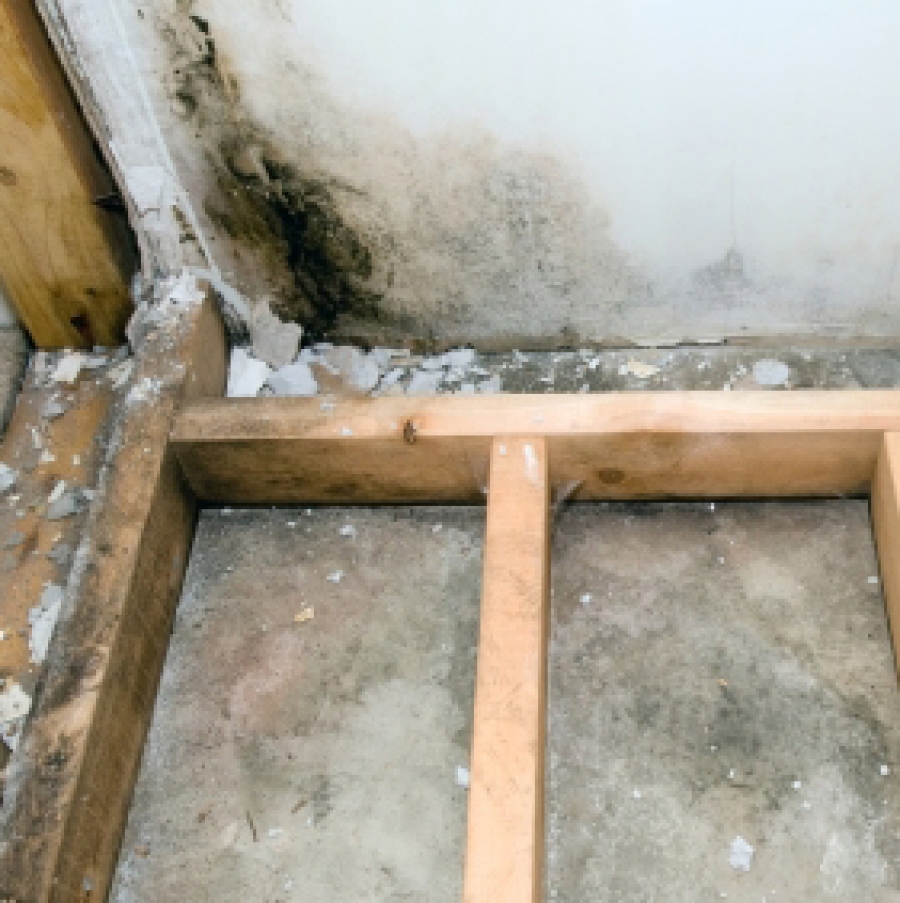Mold Remediation
A popular but false notion is that mold (a fungus) only grows within dark, wet spaces inside a building. In actuality, mold spores can be carried from the outdoors into a building by people, ventilation systems, and even pets and open windows. Once inside, spores can mature into visible colonies if proper conditions are met -- moderate temperature, available moisture, and a food source.

†
†
†
Topic Summary
Growth Conditions
- Moderate Temperature: Temperatures in the range of 60-80 degrees Fahrenheit, consistently present in millions of buildings throughout the year, are conducive to the growth of many molds.
- Moisture: A relative humidity of greater than 55 percent is a noted threshold for mold growth, and this value is often exceeded in basements, attics, wet rooms, and bathrooms.
- Food Source: Common building materials and household items that contain cellulose are an excellent food source for molds. These include wood products, drywall, wallpaper, and paper reading materials. Ceiling tile materials and some carpeting components are also common food sources for molds routinely found in buildings.
Mold Remediation: Clean up
Mold remediation projects should include two phases. First is the clean-up effort. This involves removing mold-contaminated materials, drying out wet areas within a building, and discarding any mold food sources such as drywall, pipe lagging, and carpeting previously damaged by water. Durable building surfaces exposed to molds, such as tile floors and concrete walls, can be cleaned with a mixture of water and a mold disinfectant, such as alcohol or household bleach. Mold will return if a clean up is conducted without alleviating the food, temperature, and moisture availabilities that initially created the infestation. This is because the presence of mold indicates the presence of mold spores. The spores are resilient and can remain dormant for long periods of time, maturing into mold colonies once again when the proper conditions are met.
Mold Remediation: Preventive
Preventive measures must be completed in conjunction with a clean-up project. Eliminating moisture intrusion in the form of water leakages within a building envelope and relative humidity control are the primary preventive tools against recurring mold growth. Specifically, this will require roof leaks, window leaks, and condensation on pipes within the building to be corrected. In areas of the building with high humidity, better ventilation and dehumidification must be installed. Reduction of potential mold food sources in problem areas is also recommended.

Buildipedia Staff
The Buildipedia research and writing staff consists of dozens of experienced professionals from many sectors of the industry, including architects, designers, contractors, and engineers.
Website: buildipedia.com/


